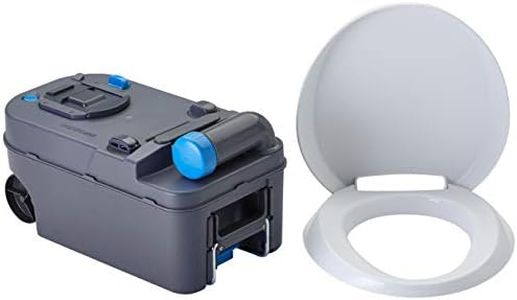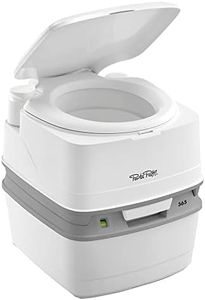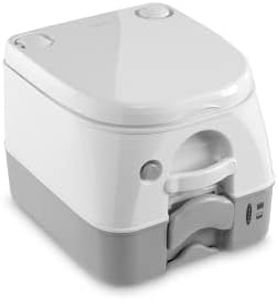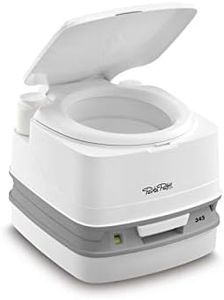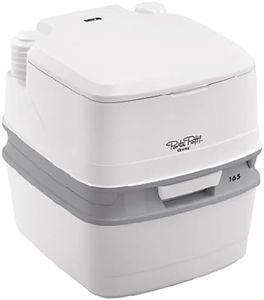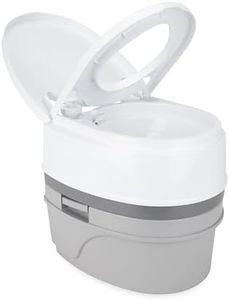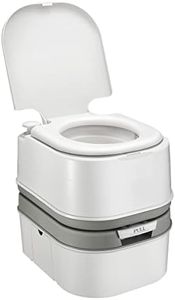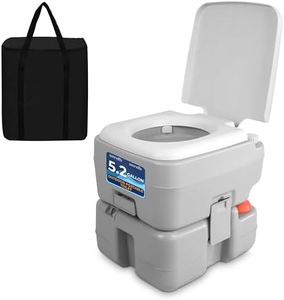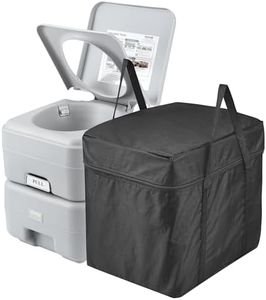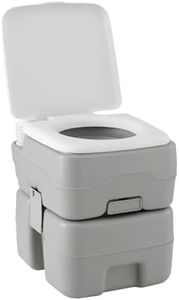We Use CookiesWe use cookies to enhance the security, performance,
functionality and for analytical and promotional activities. By continuing to browse this site you
are agreeing to our privacy policy
10 Best Rv Toilets
From leading brands and best sellers available on the web.By clicking on a link to a third party's website, log data is shared with that third party.
Buying Guide for the Best Rv Toilets
Choosing the right RV toilet can make a big difference in your comfort and convenience when traveling or camping. Unlike standard home toilets, RV toilets need to handle waste efficiently within the limitations of a mobile space and a limited plumbing system. When picking an RV toilet, think about your available space, how often you'll use it, and how much maintenance you're willing to do. Consider both convenience and how the toilet will fit into your travel lifestyle.Toilet TypeRV toilets come in several main types: gravity flush, portable, cassette, and composting. Gravity flush toilets work similarly to household toilets by using water and gravity to flush waste into a holding tank. Portable toilets are self-contained units that can be moved and emptied manually, making them great for smaller RVs or occasional use. Cassette toilets have a fixed bowl but a removable waste tank, offering a balance between portable and built-in designs. Composting toilets break down waste without water, ideal for extended off-grid trips but needing more maintenance. Your choice depends on your RV's plumbing, space, and if you plan to camp with or without hookups.
Size and HeightThe size and height of an RV toilet affect comfort and space usage. Higher, residential-style toilets offer more comfort for adults and those with mobility needs, while compact and lower models save space and may suit smaller RV bathrooms. Before buying, check your available space and consider who will most often use the toilet; taller individuals generally prefer a higher seat, while smaller spaces may require a compact design.
Water UsageDifferent toilets use varying amounts of water per flush, which matters because most RVs have limited fresh water tanks. Low-flush or waterless models help conserve water, especially useful for dry camping. If you plan to camp at sites with full hookups, higher water usage may not be an issue, but for frequent boondocking, choose a toilet designed to minimize water use.
Ease of InstallationSome RV toilets are designed for simple, DIY installation, while others may require professional plumbing work or specific space arrangements. If you're replacing an old toilet, check compatibility with existing plumbing and mounting hardware. For first-time installations or major upgrades, consider how comfortable you are with basic plumbing tasks, or if you'll need expert help.
Waste Disposal MethodHow you plan to empty and clean your RV toilet is a key consideration. Gravity flush and cassette toilets typically use a black tank or removable waste cassette, which you empty at dump stations. Portable toilets can be taken to any suitable disposal location. Composting toilets require occasional emptying of solids and proper disposal of liquids. Your choice should fit both your comfort level with handling waste and availability of disposal facilities on your trips.
Material and Build QualityRV toilets are commonly made from plastic or porcelain. Porcelain is heavier and feels more like a home toilet, offering greater durability and easier cleaning, but weighs more. Plastic toilets are lighter and less expensive, but may not last as long or feel as sturdy. Think about how much weight your RV can handle and how much comfort you want.

